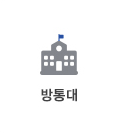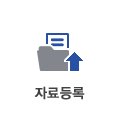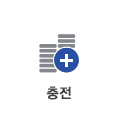
-
1
-
2
-
3
-
4
-
5
-
6
-
7
-
8
-
9
-
10
-
11
-
12
-
13
-
14
-
15
-
16
-
17
-
18
-
19
-
20
-
21
-
22
-
23
-
24
-
25
-
26
-
27
-
28
-
29
-
30
-
31
-
32
-
33
-
34
-
35
-
36
-
37
-
38
-
39
-
40
-
41
-
42


목차
chapter 1
chapter 2
chapter 3
chapter 4
chapter 5
chapter 6
chapter 7
chapter 8
chapter 9
chapter 10
chapter 11
chapter 12
chapter 13
chapter 2
chapter 3
chapter 4
chapter 5
chapter 6
chapter 7
chapter 8
chapter 9
chapter 10
chapter 11
chapter 12
chapter 13
본문내용
?
Answer: Polling can be more efficient than interrupt-driven I/O. This is the case when the I/O is frequent and of short duration. Even though a single serial port will perform I/O relatively infrequently and should thus use interrupts, a collection of serial ports such as those in a terminal concentrator can produce a lot of short I/O operations, and interrupting for each one could create a heavy load on the system. A well-timed polling loop could alleviate that load without wasting many resources through looping with no I/O needed.
13.4 Polling for an I/O completion can waste a large number of CPU cycles if the processor iterates a busy-waiting loop many times before the I/O completes. But if the I/O device is ready for service, polling can be much more efficient than is catching and dispatching an interrupt. Describe a hybrid strategy that combines polling, sleeping, and interrupts for I/O device service. For each of these three strategies (pure polling, pure interrupts, hybrid), describe a computing environment in which that strategy is more efficient than is either of the others.
Answer: A hybrid approach could switch between polling and interrupts depending on the length of the I/O operation wait. For example, we could poll and loop N times, and if the device is still busy at N+1, we could set an interrupt and sleep. This approach would avoid long busy-waiting cycles. This method would be best for very long or very short busy times. It would be inefficient it the I/O completes at N+T (where T is a small number of cycles) due to the overhead of polling plus setting up and catching interrupts. Pure polling is best with very short wait times. Interrupts are best with known long wait times.
13.5 How does DMA increase system concurrency? How does it complicate hardware design?
Answer: DMA increases system concurrency by allowing the CPU to perform tasks while the DMA system transfers data via the system and memory buses. Hardware design is complicated because the DMA controller must be integrated into the system, and the system must allow the DMA controller to be a bus master. Cycle stealing may also be necessary to allow the CPU and DMA controller to share use of the memory bus.
13.6 Why is it important to scale up system bus and device speeds as the CPU speed increases?
Answer: Consider a system which performs 50% I/O and 50% computes. Doubling the CPU performance on this system would increase total system performance by only 50%. Doubling both system aspects would increase performance by 100%. Generally, it is important to remove the current system bottleneck, and to increase overall system performance, rather than blindly increasing the performance of individual system components.
13.7 Distinguish between a STREAMS driver and a STREAMS module.
Answer: The STREAMS driver controls a physical device that could be involved in a STREAMS operation. The STREAMS module modifies the flow of data between the head (the user interface) and the driver.
Answer: Polling can be more efficient than interrupt-driven I/O. This is the case when the I/O is frequent and of short duration. Even though a single serial port will perform I/O relatively infrequently and should thus use interrupts, a collection of serial ports such as those in a terminal concentrator can produce a lot of short I/O operations, and interrupting for each one could create a heavy load on the system. A well-timed polling loop could alleviate that load without wasting many resources through looping with no I/O needed.
13.4 Polling for an I/O completion can waste a large number of CPU cycles if the processor iterates a busy-waiting loop many times before the I/O completes. But if the I/O device is ready for service, polling can be much more efficient than is catching and dispatching an interrupt. Describe a hybrid strategy that combines polling, sleeping, and interrupts for I/O device service. For each of these three strategies (pure polling, pure interrupts, hybrid), describe a computing environment in which that strategy is more efficient than is either of the others.
Answer: A hybrid approach could switch between polling and interrupts depending on the length of the I/O operation wait. For example, we could poll and loop N times, and if the device is still busy at N+1, we could set an interrupt and sleep. This approach would avoid long busy-waiting cycles. This method would be best for very long or very short busy times. It would be inefficient it the I/O completes at N+T (where T is a small number of cycles) due to the overhead of polling plus setting up and catching interrupts. Pure polling is best with very short wait times. Interrupts are best with known long wait times.
13.5 How does DMA increase system concurrency? How does it complicate hardware design?
Answer: DMA increases system concurrency by allowing the CPU to perform tasks while the DMA system transfers data via the system and memory buses. Hardware design is complicated because the DMA controller must be integrated into the system, and the system must allow the DMA controller to be a bus master. Cycle stealing may also be necessary to allow the CPU and DMA controller to share use of the memory bus.
13.6 Why is it important to scale up system bus and device speeds as the CPU speed increases?
Answer: Consider a system which performs 50% I/O and 50% computes. Doubling the CPU performance on this system would increase total system performance by only 50%. Doubling both system aspects would increase performance by 100%. Generally, it is important to remove the current system bottleneck, and to increase overall system performance, rather than blindly increasing the performance of individual system components.
13.7 Distinguish between a STREAMS driver and a STREAMS module.
Answer: The STREAMS driver controls a physical device that could be involved in a STREAMS operation. The STREAMS module modifies the flow of data between the head (the user interface) and the driver.
추천자료
 교육과정의 운영체제
교육과정의 운영체제 운영체제(OS) 리눅스 프로세스 관련 커널 소스 분석
운영체제(OS) 리눅스 프로세스 관련 커널 소스 분석 조선 개국 초기의 왕권 강화와 국정운영체제와 유교정치
조선 개국 초기의 왕권 강화와 국정운영체제와 유교정치 [공학/컴퓨터/통신] 운영체제란?
[공학/컴퓨터/통신] 운영체제란? 우리나라 유아교육기관의 운영체제
우리나라 유아교육기관의 운영체제 운영체제 용어정리
운영체제 용어정리 [기술기반][ECC기술][ERP기술][XML기술][무선랜기술][SecureOS기술]ECC기술기반제품, ERP(전...
[기술기반][ECC기술][ERP기술][XML기술][무선랜기술][SecureOS기술]ECC기술기반제품, ERP(전... [운영체제] [운영체제] 핀토스(pintos)프로젝트 설치 및 소스코드 분석 보고서
[운영체제] [운영체제] 핀토스(pintos)프로젝트 설치 및 소스코드 분석 보고서 현재 32비트 운영체제에 비해 64비트 운영체제가 가지는 장점
현재 32비트 운영체제에 비해 64비트 운영체제가 가지는 장점 [운영체제(OS) Shell(셸) 구현]운영체제(OS) Shell 구현 (소스포함)
[운영체제(OS) Shell(셸) 구현]운영체제(OS) Shell 구현 (소스포함) 학교교육과정의 의미, 학교교육과정의 특성, 학교교육과정의 편성운영체제, 학교교육과정의 ...
학교교육과정의 의미, 학교교육과정의 특성, 학교교육과정의 편성운영체제, 학교교육과정의 ... 모든 유닉스 계열의 운영체제장단점을 비교분석
모든 유닉스 계열의 운영체제장단점을 비교분석




























































소개글